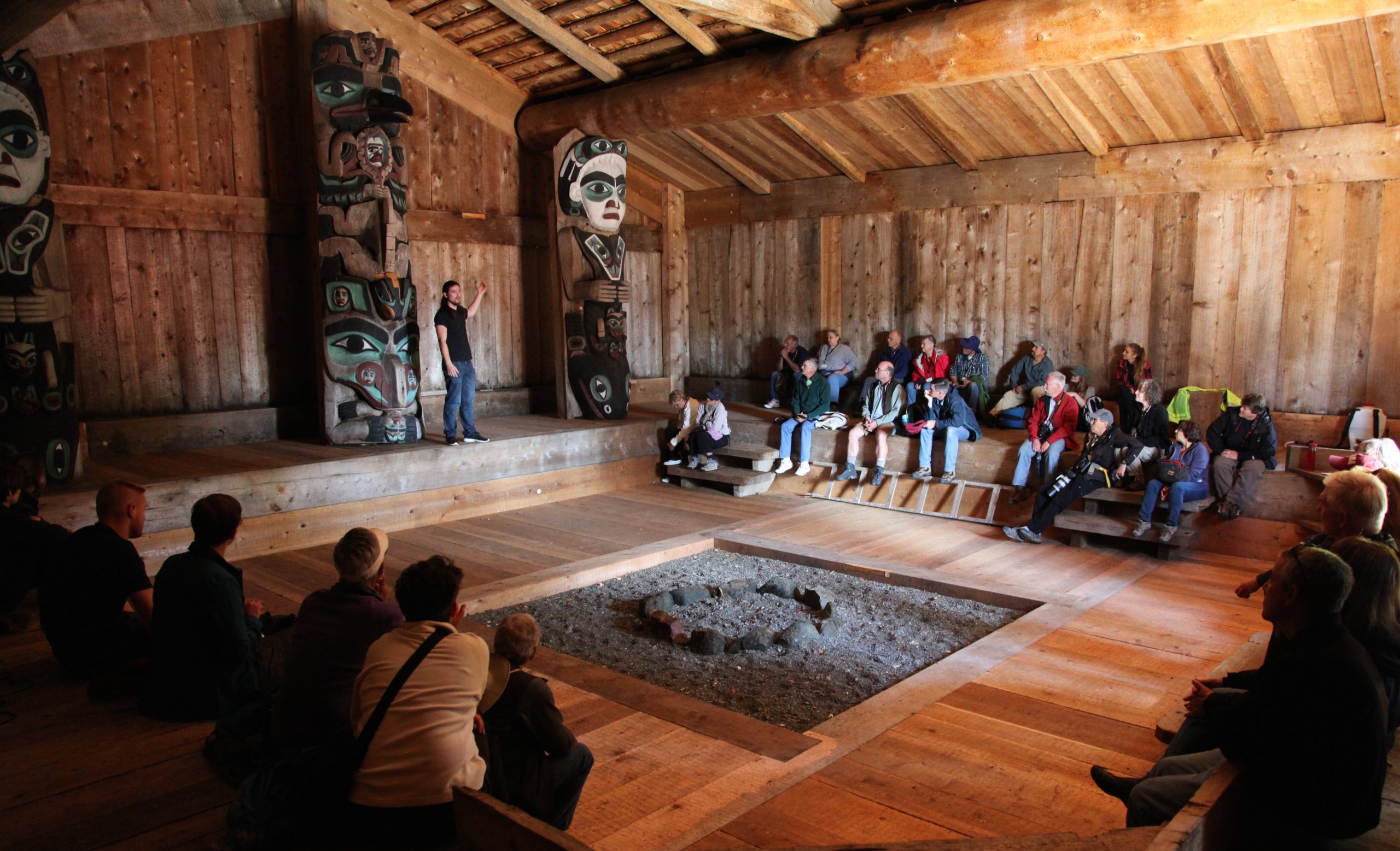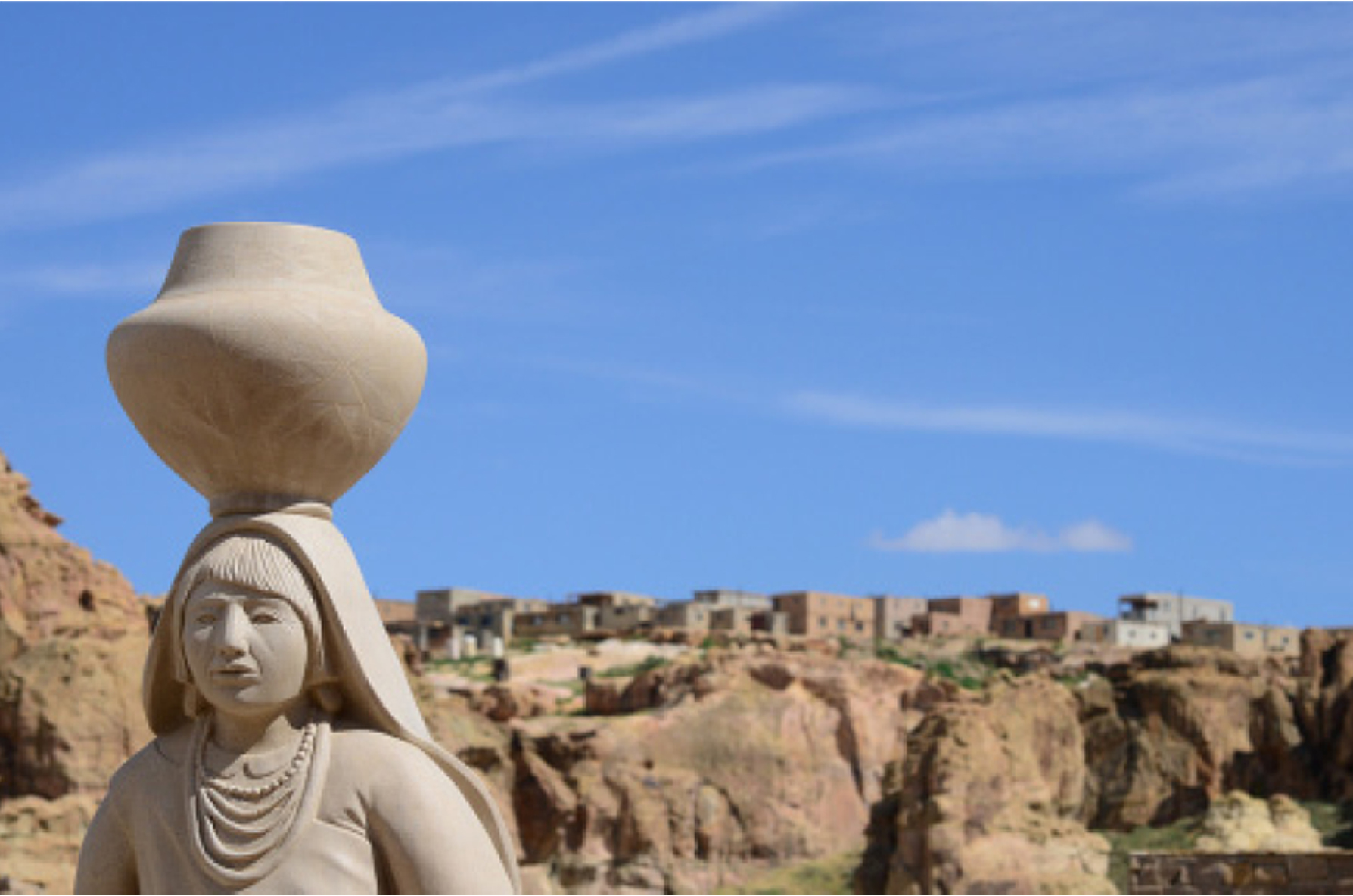Destinations rich in Indigenous culture and history can enrich any travel experience, but it's important to respect etiquette and proceed with knowledge.
When visiting sites of cultural or historical significance to Native Americans, it's important to understand and respect boundaries. This is, of course, common sense, and a message emphasized by Shelley Rupert (Paiute/Washoe), CEO of the American Indian Alaska Native Tourism Association (AIANTA).
“If someone is thinking about visiting tribal nations and the community is one of their destinations or experiences, it's a good idea to do your research before you go,” Rupert says. The code of conduct simply means paying attention to signs posted by officials, asking permission to photograph events or activities, and not picking up or taking artifacts or objects. Of course, the rules vary from place to place. Tribal nations try to balance community and tradition while providing a positive experience for visitors, Rupert says.
 Hiking through Niimiipuu (Nez Perce) Country in Idaho (Photo courtesy of Nez Perce Tourism).
Hiking through Niimiipuu (Nez Perce) Country in Idaho (Photo courtesy of Nez Perce Tourism).
In many cases, museums, especially those like the Smithsonian's National Museum of the American Indian and the Museum of the Five Civilizations Tribes in Muskogee, Oklahoma, allow photography unless otherwise noted, but there are exceptions to be aware of. Mesa Verde National Park in southwest Colorado allows you to immerse yourself in Native American culture, including one of the best-preserved sites of Ancestral Pueblo ruins. But leave your drone at home; drones are prohibited, according to rules posted on the park's website.
“Oftentimes tribes have information on their websites about their expectations for visitors and what permits need to be purchased, so everyone knows well in advance what is expected of them, because there is a difference between public lands and tribal lands or Native American homelands,” said Ruppert, who has spent almost 20 years promoting Native American tourism.
 Chief Song-I-Hut's Whale House in Historic Haida Village Kasaan, Alaska (Photo courtesy of Historic Haida Village).
Chief Song-I-Hut's Whale House in Historic Haida Village Kasaan, Alaska (Photo courtesy of Historic Haida Village).
Rupert's nonprofit (AIANTA) empowers tourists through its online guide, NativeAmerica.travel. The website shares what travelers can experience throughout Indian Country. The site is a travel and planning tool that divides the United States into 12 regions. It features a variety of travel experiences, from arts and culture to living history and historic sites. The itinerary section suggests destinations on a variety of themes. It also has maps, calendars, blog posts featuring events, and best of all, practical guidelines that can be applied to any trip.
“I think it's very simple. [make a] “We're so used to pulling out our phones and taking videos and pictures that mistakes are hard to make,” she said, “so on some Indigenous lands we have to be mindful of that. It's not something that can be tolerated.”
 Camping in Blackfoot, Montana Nation (Photo courtesy of the Blackfoot Nation).
Camping in Blackfoot, Montana Nation (Photo courtesy of the Blackfoot Nation).
Rupert discovered this for herself when she visited New Mexico. “I'm not from New Mexico, and when I came here, I wanted to know all about the pueblos of New Mexico,” she says. “So I was invited to a few different holidays and ceremonies for a few pueblos, and one of the things I noticed right away was that they had signs that said, 'No cameras,' 'No filming.' I thought, 'Oh, okay, yeah, no cameras, no filming.' But I quickly realized that they meant no cell phones, no cameras, no filming. There are people in the crowds, and you're looking for people who are acting out of habit or filming something that they shouldn't be filming.
“They came in, took my phone and held it, and I thought, 'Wow, wow,' but then I realized it's up to each individual pueblo's preferences on how they treat visitors who come onto their land. [there are] Something they want to keep sacred. [do so by having] “We enforce these rules and policies on our visitors.”
 Canoe building by the Yurok Tribe of California (Photo courtesy of the Yurok Tribe).
Canoe building by the Yurok Tribe of California (Photo courtesy of the Yurok Tribe).
She found a different perspective while working as Nevada's director of Indian Affairs. Television production teams repeatedly asked to film a ghost-hunting show on the boarding school grounds. Rupert always turned them down. “I said no because I didn't want to disturb the ghosts. I just wanted them to be there and rest in peace,” Rupert says. “So I actually had to negotiate with the state of Nevada to make sure they supported my decision, so that when they got calls from these groups, they would turn them down as well.”
Increasing depictions of Native Americans in mainstream media has also led to increased interest in tourism. Killer of the Flower Moon TV series on Hulu Rescue Dogs These are two of the many high-profile Native American works that have helped bring an increase in visitors to Oklahoma. murdererThe multiple Osage Award-nominated film “Love Is Hard To Live” has brought tourists to Osage sites across the nation, and the state's tourism director has urged visitors to be respectful as the numbers increase.
 Oneida Tribe of Wisconsin's Walk of Fame Legend (Photo: Courtesy of Oneida, Wisconsin Tourism Office).
Oneida Tribe of Wisconsin's Walk of Fame Legend (Photo: Courtesy of Oneida, Wisconsin Tourism Office).
“As we welcome visitors to Osage County to learn more about this history, it is important to remind everyone how to be respectful of the land, the people and the historic sites,” Oklahoma Tourism and Recreation Department Director Shelley Zumwalt said in a statement last year.
Ruppert worked with Congress to pass the Enhancing Native American Tourism and Visitor Experiences (NATIVE) Act in 2016, which increased the coordination and sharing of resources between communities and the federal government. She believes Native American tourism is now at an all-time high. “People have a real interest in learning more. They have a lot of time to really think about what's important to them. It's not just about Instagram photos anymore.”
“It's about understanding the people, understanding the culture, visiting them and seeing them where they are. And we're certainly seeing that with the momentum of Indigenous tourism in this country.”
Start with the basics
NativeAmerica.travel readers will be reminded of the general protocol, regardless of the tribe or region you’re visiting.
- Please pay attention to signs and follow each tribe's rules and regulations.
- Weapon, drug and alcohol abuse will not be tolerated.
- We respect the privacy of our residential community.
- Please get permission before photographing or recording any person, event, or activity.
- Do not pick up or remove any artifacts or objects.
- Cemeteries and religious ceremonies are sacred places and should not be entered.
 Acoma Pueblo carvings (Photo courtesy of Sky City Cultural Center).
Acoma Pueblo carvings (Photo courtesy of Sky City Cultural Center).
For more information, visit NativeAmerica.travel Protocol and Code Information Travel to indigenous lands and sites.
From the July 2024 issue.
Header image: Tipi camp of the Blackfoot tribe in Montana (Photo: Courtesy Bruce Rettig


